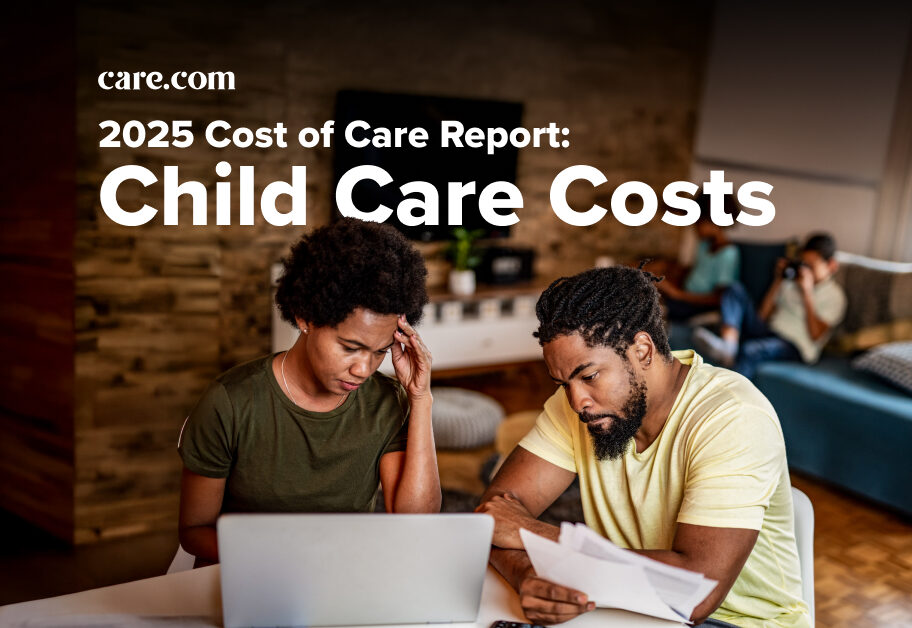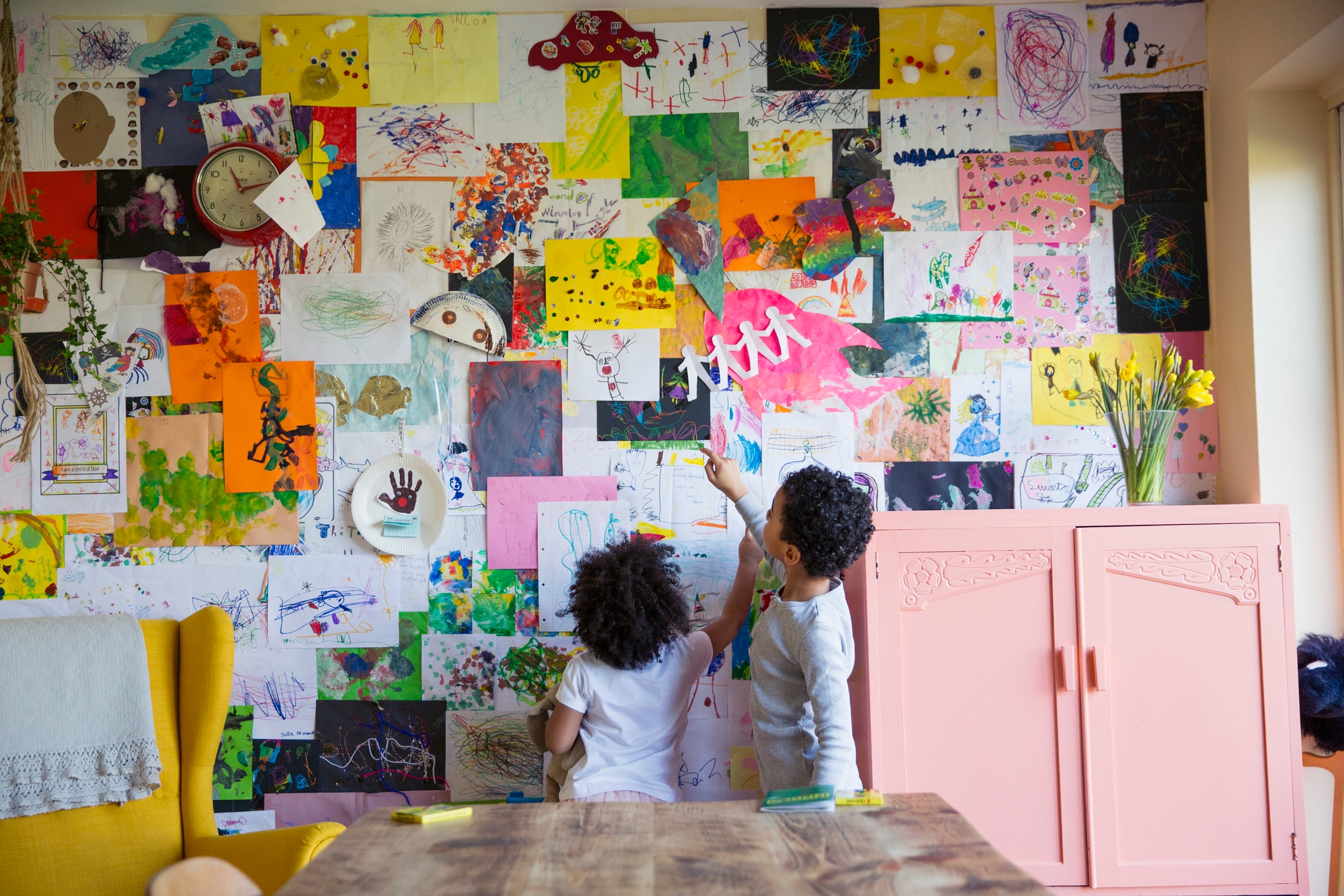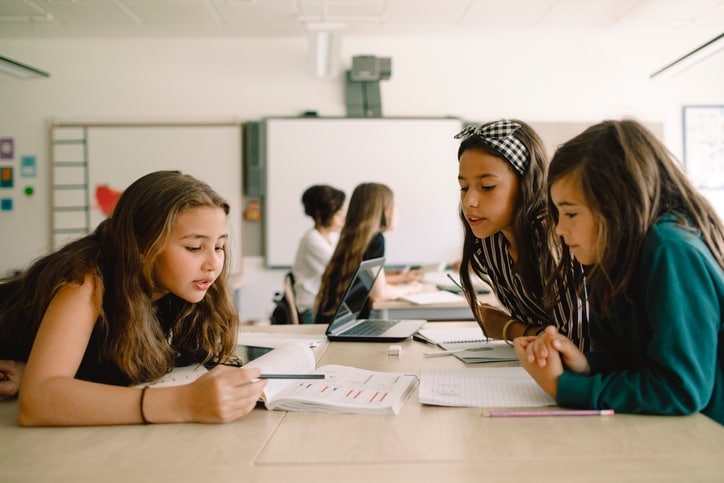While every child and student deserves both safety and kindness, the reality is that bullying is, unfortunately, a common occurrence at school and between peers online. Conflict, arguments and making mistakes while learning how to communicate and problem-solve are all part of growing up. It’s important to establish the difference between these events and bullying.
“In order for something to be bullying rather than everyday conflict, it must be: intentional, repeated, aggressive and the capitalization of a power imbalance due to differences in identities, whether that is racial, gender, sexual orientation, ability or other identifying factors,” says Andrea Marano, a licensed clinical social worker.
Bullying is, unfortunately, more prevalent than some parents may know. One out of five 12-18-year-old students report being bullied during the school year. Additionally, LGBTQIA+ youth consistently report higher rates of bullying and are more likely to miss school because of safety concerns, while students who are of two or more races reported more bullying than students of just one race.
In an effort to create safer school experiences for students, here are some of the most common types of bullying parents should be aware of and what parents and school officials can do to mitigate and prevent bullying.
What is bullying?
“Bullying is intentional negative behavior that is repeated and involves an imbalance of social or physical power. It can take many forms,” explains Tia Kim, a developmental psychologist, researcher and bullying prevention expert at Committee for Children. Kim says the four most common types of bullying are cyber, verbal, physical and relational.
While all types of bullying are harmful and should be taken seriously, Marano says the types are distinguished by how each is delivered. Types of bullying aren’t mutually exclusive, explains Kim, who adds, “Bullying can start online and move into physical spaces like school or vice versa.”
Join Care for free
Types of bullying
Here’s a closer look at the different forms of bullying and the warning signs to look out for.
Cyberbullying
Cyberbullying is defined as “the use of technology to harass, threaten or embarrass another person,” explains Michelle English, a licensed clinical social worker and executive clinical manager of Health Life Recovery.
Interacting behind a screen and with a false sense of anonymity can lead to things getting out of hand, Marano says, especially without body language or facial expressions to provide context. Further, she explains that when a negative online comment about a peer is liked, or if a post is shared, it can send the message that the bullying (and bully) is being supported. This can make things escalate at a fast pace, she adds.
Cyberbullying is one of the most common types of bullying students may face, according to the Centers for Disease Control and Prevention (CDC), but it doesn’t always happen at school. “We know that of all the social networks, about 79% of the users on YouTube have been cyberbullied, followed by Snapchat at 69% and TikTok at 64%,” says Kim.
Verbal bullying
Verbal bullying, also known as name-calling, includes insults, negative commentary and humiliation. Verbal bullying is used to assert control and power over another child, notes Kim. It involves continuous hurtful insults aimed at belittling and demeaning others. “Verbal bullying is especially tricky to recognize since it usually takes place when adults aren’t around, making it a matter of one child’s word against another’s,” Kim adds.
Marano says that in some cases of verbal bullying, kids don’t fully understand the context and meaning behind the words they are using and sometimes things are taken out of context. “Education around language [and] its origin and open conversations about impact versus intent are critical in combating this very common type of bullying we see in schools,” she explains.
“Kids participating in relational bullying isolate, spread rumors, manipulate and betray confidences, seeking to enhance their own social status through control.”
— Tia Kim, a developmental psychologist
Relational bullying
Relational bullying is a more subtle form of bullying and is also known as emotional or social bullying, Kim says. If you’re thinking about queen bees and mean girls, you’re on the right track.
“Kids participating in relational bullying isolate, spread rumors, manipulate and betray confidences, seeking to enhance their own social status through control,” notes Kim. Examples include being left out of a conversation or inside jokes shared at the lunch table.
Relational bullying damages a child’s social relationships and is more prevalent among girls, especially in grades 5 to 8, points out English. Kids are most likely to be bullied during middle school, and girls often use relational bullying as an indirect form of control to establish popularity or because they are acting out of jealousy or fear of being left out.
Physical bullying
Physical bullying is sometimes thought of as the most obvious type of bullying since it involves hitting, kicking and threatening another person’s safety. Kim says that while kicking, hitting, punching and shoving are clear signs of bullying, this type of bullying is also a way kids use their bodies to control others. Since it’s often the easiest to spot, it can also be given quicker attention since the bullying is visible and clear.
Marano warns of “play fighting” or “slap boxing” that is sometimes used to settle arguments and be disguised as playful. In reality, she says, “it is stemming from a brewing, unaddressed issue. As a school professional, it can sometimes be difficult to distinguish between the two, especially if it is a continuous occurrence.”
How to support kids through different kinds of bullying
If you know or suspect that your child is being bullied, there are steps to take to get everyone involved the care and support they need.
Set the stage for them to open up to you
“If you suspect your child is being bullied, it’s important to talk to them about it,” Kim says. “Listen actively and empathetically so you have a complete understanding of what happened.” This is part of what English says is a safe and supportive environment where children feel comfortable sharing their feelings without fear of judgment.
Kim adds that you should remind them it’s not their fault and that you will do everything you can to help. English also reminds parents that kids may not want to talk about the situation, and will need time to come to terms with their feelings. She says parents can express empathy and provide comfort to their child while still being firm in making sure action is taken to stop the bullying.
Inform and involve the school
If you believe your child is experiencing bullying then you have the right to inform the school, says Marano. Be prepared to provide documentation and any evidence you have to support your child. When a student is bullied, it’s not only important to make it stop or to hold the bully accountable. It’s necessary for the victim to feel supported and safe.
Empower your child
Marano also indicates that parents have the ability to empower their children. “It is critical that parents consistently empower their children to advocate for themselves, identify who can support them when the parent isn’t present and practice phrases and strategies to use to combat this type of behavior,” Marano says.
Take a holistic approach to the conflict
Bobby Morgan, a middle school vice principal and Educational Consultant at Liberation Lab, says a holistic approach can help repair damage done by bullying. Morgan suggests incorporating restorative justice practices, which focus on mediation instead of punishment alone and seek to get to the root cause of behavior.
Restorative justice builds trust while addressing the harm and the cause of the harm, Morgan says. A restorative circle, for example, is a consensual and facilitated space for both the victim and the bully to talk to each other and offer their perspective of an event that happened. In such a process, the bully is held accountable while given strategies for repairing the harm to themselves as well as the community they are a part of.
Morgan says that parents and caregivers should be part of this process too. It will help to build relationships and make commitments to help everyone move forward in more positive ways.
“Children are much less likely to bully someone they know or have a connection to, so providing those opportunities is paramount as well as explicitly teaching children how to resolve conflict and manage discomfort.”
— Andrea Marano, a licensed clinical social worker
How to reduce forms of bullying moving forward
While a bully-free school and society would be ideal, there are ways to drastically reduce bullying by giving students the tools they need to build confidence and learn how to solve conflicts in respectful ways.
Advocate for social-emotional learning at school
Research shows that a focus on social-emotional learning creates physically and emotionally safer school environments. By teaching students essential social-emotional skills like empathy, emotion regulation and social problem solving through a classroom-based program, bullying can be prevented while friendship skills are being developed, explains Kim.
Marano seconds the fact that empathy and understanding play vital roles in mitigating bullying. “Children are much less likely to bully someone they know or have a connection to, so providing those opportunities is paramount as well as explicitly teaching children how to resolve conflict and manage discomfort,” she says.
School anti-bullying policies and training-based support given to staff and teachers also help reduce bullying and set the tone for expectations. This creates a system where respect and empathy is expected and one where victims can feel safe to report an incident.
Practice the 3 Rs of bullying
Kim says that when an upstander (defined by the CDC as “someone who sees what happens and intervenes, interrupts or speaks up to stop bullying”) intervenes in a bullying situation, they can reduce the bullying that is occurring. To be an upstander, Kim recommends using the three Rs of bullying: recognize, refuse and report.
Recognize: Help kids recognize that bullying is when someone is mean to someone else on purpose, and the person it’s happening to hasn’t been able to make it stop.
Refuse: If they feel safe, instruct kids (bystanders included) to get calm, stand straight and tall, look at the person you are speaking to, and say what you mean in a strong, clear, respectful voice. “Please stop! That is mean.”
Report: Let kids know that reporting isn’t tattling. Reporting is telling a caring adult to keep people safe.
The bottom line
The fact of the matter is that kids of all ages continue to be subjected to various types of bullying. And when it happens to your child, you’ll do well to talk to your child and brainstorm possible solutions they feel comfortable with. If the problem persists, caregivers should contact school administrators and demand that immediate disciplinary actions and steps toward accountability are taken, says English. She also recommends looking into support groups or a professional counselor to help a child find ways to cope with bullying.
No matter the type of bullying a child is facing, addressing the situation should never be a parent or child’s burden alone. As English says, “School administrators must also take the problem seriously and be proactive in creating a safe learning environment for all students.”





